A comprehensive review of leukaemia including the symptoms, causes, and alternative treatments from CAR-T immunotherapy and stem cell transplants to the herbs Feverfew and Honokiol; it covers the different types AML, CML, CLL and ALL as well as child leukaemia and leukopenia.
This leukaemia overview and associated articles will help you increase your personal odds of beating leukaemia - the symptoms, the diagnosis and all the latest options on treatments and therapies - from cancer drugs and chemotherapy to surgery, radiotherapy and complementary therapies; including all the very latest alternative and new therapies and information.
Read the whole article below or just select the part(s) that you are interested in from the list below and click onto that piece.
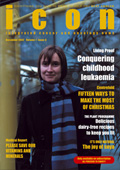
What is Leukaemia?
Leukaemia is a form of cancer that starts in the blood-forming cells of the bone marrow. It is not a single cancer, but a number of individual but related cancers. All involve an over-production of white blood cells and, for example in the blood stream, this suppresses levels of red blood cells and blood platelets. Since red blood cells carry essential oxygen to the tissues of the body and platelets are primarily concerned with blood clotting, you can start to see the effects leukaemia can have on the whole body. This is a whole body disease and must be treated as such.
Types of Leukaemia
There are both acute and chronic forms of leukaemia, each with sub-types, which respond to different treatments. In addition there is child leukaemia, which in turn demands slightly different specialist therapies.
The main types of leukaemia are:
In chronic leukaemia, the symptoms appear slowly over a long time and are often quiet for quite a period of time.
In acute leukaemia, the symptoms get worse quickly; and include nausea, confusion, seizures and loss of muscle control.
In adults, CLL is the most common (35%), and AML next (32%). In Children, ALL accounts for about three out of every four cases.
 Want to receive the very latest news and information on this subject? Click here
Want to receive the very latest news and information on this subject? Click here
return to the top
White blood cells raised in leukemia
Your blood is made up of plasma, platelets, red blood cells and white blood cells.
White blood cells may also be called leukocytes, these are the cells of the immune system, which defend the body against all manner of invaders - from toxins to viruses, to yeasts to bacteria, to cancer cells. These white cells are made in the bone marrow and found throughout the body; they are ’stored’ in the blood and the lymph. The lymph is a colourless liquid with twice the volume of the blood and its job is to take toxins away from the cells and out into the blood to be excreted from the body.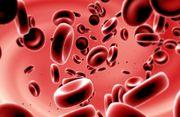
Leukocytes make up about 1 per cent of the total volume of the blood under normal conditions. In conditions such as leukaemia the numbers are raised; in conditions such as leukopenia they are diminished.
return to the top
Types of white cells
While the job of red blood cells is to take oxygen from the lungs to the tissues of the body and the job of platelets is to control bleeding, white blood cells are more complex.
Their overall job is to help fight infections and defend the body, but there are five different types of cells.
Lymphocytes - these create antibodies to defend against invaders and come in several forms: T- cells are the body’s policemen, identifying the bad guys for the B- cells to neutralise. Natural killer (NK) cells kill cells hiding viruses, bacteria or cancers. Lymphocytes and neutrophils make up 90 per cent of all the white cells.
Monocytes - have a longer life than other white cells and break down bacteria
Neutrophils respond to chemicals produced by invaders like yeasts and against dead cells and move towards them and digest them. (Phagocytosis). They are your first line of defense against invaders.
Then you have eosinophils which respond to parasites and destroy cancer cells; and basophils, which respond to allergens (like pollen) and produce histamine to promote an immune response.
return to the top
Leukopenia
This disease is the opposite of leukaemia in that there are too few white cells. When the white cell count is low it puts the patient at great risk of infection.
White cell count may be low due to:
-
medications such as clozapine, an anti-psychotic
-
immunosuppressive drugs
-
chemotherapy or, to a lesser extent, radiotherapy
-
a lack of beneficial bacteria (see later)
return to the top
A Complementary and Integrative therapy programme can increase your personal odds and chances of survival
A good number of CANCERactive patients have built a totally integrative programme, putting complementary therapies together with their orthodox therapies to great effect. Some examples include:
Firstly, the treatment for leukemia can involve large amounts of hard-hitting drugs followed by stem cell or bane marrow transplants. You can make the drugs more effective while protecting your body from the worst of the damage.
Go to: 10 ways to improve your chemotherapy while reducing the side-effects
Next, we know that leukemia is most usually the product of toxins - environmental, ones you ingest like aspartame, or often toxins from infecting agents such as yeasts, parasites, bacteria and viruses. There are natural compounds and diets that can clean the body and kill off the infections. Here is research on how pathogens in your gut are involved in leukemia, from the University of Chicago.
Go to: Gut bacteria set stage for leukemia development
Finally, you will also see the importance of restricting blood sugar in your diet - leukemia cells have been shown by Professor Craig Jordan at the Colorado Cancer Center to rob healthy adjacent cells of their sugar and create conditions to optimise blood sugar.
Go to: Leukemia robs healthy cells of their glucose intake
That's just three things. There is a lot you can do to help yourself.
If you are confused by everything and find the Internet a mine-field of conflicting advice, why not think about asking Chris Woollams to help you put together your own Personal Plan?
Go to: What people say about Personal Prescriptions with Chris Woollams
 If you find all your doctors terminology difficult to understand click on this link: Doctorspeak where we turn it all into simple, easy-to-understand language. If you want a really good, easy-to-use cancer book, look no further than the UK’s Best Seller ’Everything you need to know to help you beat cancer’, written at the request of doctors by Chris Woollams when he was helping his daughter survive nearly 8 times longer than officially predicted. It really has made a big difference to a lot of people across the world.
If you find all your doctors terminology difficult to understand click on this link: Doctorspeak where we turn it all into simple, easy-to-understand language. If you want a really good, easy-to-use cancer book, look no further than the UK’s Best Seller ’Everything you need to know to help you beat cancer’, written at the request of doctors by Chris Woollams when he was helping his daughter survive nearly 8 times longer than officially predicted. It really has made a big difference to a lot of people across the world.
return to the top
The origin of blood cells and leukaemia
95 per cent of blood cells, white and red, are formed in the bone marrow. They are formed from stem cells, which are blank precursor cells that could become any cell the body ultimately needs (eye cells, stomach lining cells liver cells etc).
The spleen, liver and lymph nodes help regulate the production, differentiation, control and ultimate destruction of blood cells and all are important organs in leukaemia.
According to research from the Max Delbreak Centre for Molecular Medicine the production of white cells is controlled by a number of gene regulators and these genes have to be copied accurately. A factor (protein) called c-Myb coordinates this regulation and may be damaged in leukaemia.
return to the top
The causes of leukaemia
N.B. As our readers know we believe that only very rarely does a single factor actually cause a cancer. Some toxic factors can directly affect a cell’s DNA to produce a rogue cell, but usually these are mopped up by an effective immune system. However a number of factors are known to reduce the effectiveness of the immune system like poor diet, EMFs and toxic chemicals. We believe that where there is expert science linking risk and possible contributory factors, a precautionary principle should always be adopted.
Clearly leukaemia is an all over disease of the body. It is therefore of no surprise that the possible contributory factors are all over risks, and the best treatments are full body treatments.
 As an "all over body" disease it is no surprise that full body treatment is needed
As an "all over body" disease it is no surprise that full body treatment is needed 
Possible causes of leukemia include:
-
The 2004 International Leukaemia Conference cited a number of studies on EMFs and leukaemia, particularly the possible effect of electricity cables and pylons. Subsequently the UK Government has urged that houses should not be now built within a certain distance (200 metres).
One study reported that EMF levels can increase 5-10 fold after heavy rainfall.
In a study involving 29,083 children between 1962 and 1995 in England and Wales using matched equivalents, children living within 200 yards of power lines had a 70 per cent increased risk of leukaemia. (Draper, Oxford. BMJ 2005; 330; 1290). The study was the largest case-controlled study ever undertaken in the world.
-
Radiation from highly radioactive compounds: for example, radioactive fallout, is clearly dangerous and can promote leukaemia (see also thyroid cancer).
-
Some patients, who have previously had chemotherapy treatment for a cancer, may develop leukaemia later in life (for example ALL).
-
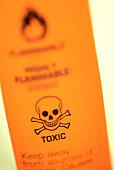 Toxins and toxic chemicals have been implicated. For example, ALL can be associated with toxins such as arsenic compounds, benzene, toluene and even the antibiotic chloramphenicol. Toluene is an every day chemical commonly used for example in some nail polishes and some perfumed products. Italian researchers (European Journal of Oncology) have several times pointed an accusatory finger at aspartame. They maintain that it is linked to a doubling of rates of leukaemia, multiple melanoma and lymphoma. In 2012 their results were confirmed by a second research study.
Toxins and toxic chemicals have been implicated. For example, ALL can be associated with toxins such as arsenic compounds, benzene, toluene and even the antibiotic chloramphenicol. Toluene is an every day chemical commonly used for example in some nail polishes and some perfumed products. Italian researchers (European Journal of Oncology) have several times pointed an accusatory finger at aspartame. They maintain that it is linked to a doubling of rates of leukaemia, multiple melanoma and lymphoma. In 2012 their results were confirmed by a second research study.
-
Farmers have higher levels of blood cancers than the norm, and there have been research links to pesticides and herbicides. Indeed when we were on Speaking Tour in Australia there was research about an increased risk for people living on golf courses with heavy chemical usage. Cases of child leukemia have been linked to rose sprays, flea collars and even indoor insecticide use. Cancer Watch icon 2006 Issue 1 covers a research study by INSERN - Using a matched sample of 550 children they studied insecticides used in a variety of products from household sprays to mosquito repellents, to flea collars and head lice treatments. Their conclusions were that usage more than doubles risk of child leukaemia. The offending ingredients appeared to be carbonates, which are present in UK products. The report added that the incidence of child leukaemia had doubled in the last 26 years, and was now one-third of all child cancers. The French Institute of Health and Medical Research have reviewed 280 cases of child leukaemia and found a 4-fold increased risk in children who live near petrol stations. The risk increases with time. (Cancer Watch icon 2005 issue 1). In the UK we have now had three examples of children developing leukemia when living next to a Land Fill site. This is not subjective - there is American a study - a Toxic Landfill in New York was linked to child leukaemia and Non-Hodgkin’s lymphoma.
-
There is growing evidence that gut bacteria issues play a role in cancers of the blood and lymph.
-
For example in leukemia, more than 15% of people over 60 years of age develop TET2 mutations in their hematopoietic stem cells, which then dominate others. These are relatively harmless precursor cells but are turned on by bacteria that ’wander’ from the gut.
-
Small intestinal bacterial overgrowth (SIBO) has been linked with chronic lymphocytic leukemia.
-
In another study on ALL, the microbiome in the mouth was seen to be different in a patient with ALL from that of a healthy person.
-
The human T-lymphotropic virus and similar retroviruses are known to cause adult T-cell leukemia. These are part of a larger group of viruses and called PTLVs. They are linked to the Similian Monkey Virus found in early Salk vaccines.
-
In a ’landmark’ study by Professor Mel Greaves in the UK, it has been shown that there is a higher incidence of child leukemia because they don’t consume enough of a diversity of bacteria when they are young - the Western world is too sanitized. His research has shown that ALL in children is a combination of genetic factors and infection prompted by a lack of protective gut bacteria in early life.
Also there is a slight link to hereditary factors.
We print this list of possible contributory factors, not so that you dwell or worry about the past, but that you think what might be currently maintaining your cancer. Are EMFs a factor; do you live under power cables? Have you been exposed to high levels of toxins, pesticides and sprays? Have you a history of antibiotics; or an imbalance of bacteria in your gut?
"If you are already buying supplements and want all natural, quality products where someone knowledgeable has done the brand selection process for you, why not see what Our Natural Selection has to offer?"
In many cases you can take action, as we will tell you, to try to clean up your whole body.
return to the top
Symptoms of Leukemia
Leukaemia cells, like all white blood cells, travel throughout the body and so the systems can be varied depending upon where the cells collect, and in what excesses.
The most common systems include:
-
Fevers, sweats and night sweats
-
Tiredness, fatigue, and general weakness
-
Headaches
-
Joint pains
-
Frequent infections
-
Bleeding and bruising easily (bleeding gums, bruises, red patches under the skin)
-
Weight loss
-
Swollen lymph nodes (armpit, neck again)
None of these of its own is a clear sign, and only a doctor can really diagnose the condition.
return to the top
Diagnosis of Leukemia
There are several methods your doctor may use:
-
Physical examination swelling in lymph nodes, liver and spleen.
-
Blood tests checking for disturbances in levels of white cells, red cells and platelets.
-
Bone marrow biopsy marrow is removed from the hip or another large bone. This is the only sure way to know if the problems really are leukaemia.The doctor may use a needle to obtain just marrow (an aspiration) or a much thicker needle to obtain marrow and bone. A local anaesthetic will be used.
-
X-ray - Used to look for signs of the disease in other parts of the body.
-
CT scan - Occasionally used, it is a series of all over body x-rays built up by computer to show possible problems in the whole body.
-
Spinal tap - Sometimes fluid may be taken from the spine, using a long thin needle and a local anaesthetic.
return to the top
Alternative Treatments for Leukemia
N.B. Leukemia is not one but about 5 different types of cancer, each treated differently. And then there is the specialized area of child leukemia. We do not intend to go into detail on any of this. Our overview is exactly that. We hope to give you information that others may not have old you and that you may find empowering and helpful in adding elements to your overall treatment plan.
 Surgery - This is hardly ever used in cases of leukaemia because it is an all over body disease. It may be used if the spleen becomes so enlarged that it is pushing on other organs and causing problems. When the spleen is removed there is a real danger of sepsis (infection in the blood or tissues) most usually by micro-organisms like pneumococci, staphylococci, E Coli meningococci. Sometimes surgery will be used to install a large plastic tube to simplify giving medications and withdrawing blood samples.
Surgery - This is hardly ever used in cases of leukaemia because it is an all over body disease. It may be used if the spleen becomes so enlarged that it is pushing on other organs and causing problems. When the spleen is removed there is a real danger of sepsis (infection in the blood or tissues) most usually by micro-organisms like pneumococci, staphylococci, E Coli meningococci. Sometimes surgery will be used to install a large plastic tube to simplify giving medications and withdrawing blood samples.
Radiotherapy - Sometimes used if there are clear localised problems, although it has been known to be used as an all over treatment too. Read our articles on Radiotherapy, particularly ’How to maximise the effectiveness if your radiotherapy’
Chemotherapy - This is orthodox medicine’s answer to an all over body treatment and is used frequently. For information on your Cancer Drugs and chemotherapy click here. Always ask for information on specific side-effects. Always ask for information on likely outcome and success rates. The drugs offered would vary according to your state of health and they type of leukaemia you have.
The biggest problem facing doctors is their belief that in leukemia they need to use large doses of chemotherapy to have a real effect with the cancer cells. However historically, chemo has been non-specific and killed all rapidly dividing cells (and wiped out the beneficial gut bacteria). This often leaves the patient very weak.
Go to: A Diet for Chemotherapy
Stem Cell Transplants - This enables treatment with higher levels of chemotherapy and radiation therapy.
Be clear, you will undertake a ’conditioning program’ before the Stem Cell Transplant. This involves very high doses of chemotherapy, and even radiotherapy. The aim is to destroy as many leukemia cells as possible and ideally all. AML patients for example may be given FLAG-IDA, a 4 drug combination for 4-6 rounds; alongside anti-fungal, anti-vial and antibiot treatment to suppress infection.
There are two types of Stem Cell Transplants - Allogenic - which uses donated stem cells; and Autologous - which uses the patient’s own cells.
Following the Stem Cell transplant, you will have no immune system, so you will also be given about 6 drugs to prevent attack from viruses, yeasts, bacteria and so on. Although this can seem almost a ridiculous cocktail of drugs, we have known patients not given the cocktail to get infections and fall very ill for up to twelve months. The problem is that some UK doctors develop extreme fear of infection, and don’t even want you to eat organic vegetables or take probiotics for fear of you ’being attacked’. It’s nonsense as you will see from this review.
In fact there is research showing outcomes are better in leukemia patients where their microbiome is monitored for pathogens and bacteria, so that they are less likely to fall ill. Not surprisingly, the view was that those people who kept their microbiomes the strongest had less infection. One patient we had at CANCERactive was treated by the Karolinska and they monitored him for possible yeast infection throughout treatment.
Acute Myeloid Leukemia, AML - in patients younger than 60 years of age about 75% go into remission after being given chemotherapy. However, remission time is limited, with only 5-year survival at about 25%. Typically, the drugs used are cytarabine plus an anthracycline drug such as daunorubicin or idarubicin. HiDAC or high dose cytarabine with idarubicin is another option. The ’high dose’ gives a greater survival rate.
The treatment is very demanding and a hospital stay is extremely likely.
The other issue to understand is that different types of leukemia involve different treatments and some are very targeted. So, for example:
Chronic Myeloid Leukemia, CML - the target here is a unique protein - BCR-ABLtyrosine kinase enzyme. A number of modern drugs called Tyrosine Kinase Inhibitors (TKIs) can be used; for example - Gleevec, Nilotinib, Dasatinib, Ponatinib and Bosutinib. The patient must have a healthy liver before using TKIs as they can have a liver-damaging effect.TKIs are highly effective in CML.
Chronic Lymphocytic Leukemia, CLL - just to highlight the complexity of treatment, if your CLL is CD-20 positive then monoclonal antibody drugs like ofatumumab or rituximab may be used along with chemo. If it is CD52 positive, then alemtuzumab is more relevant.
First line chemotherapy (sometimes called chemoimmunotherapy) uses three drugs - FCR, Fludarabine, Cyclophosphamide and Rituximab.
Acute Lymphoblastic Leukemia, ALL - There are a number of chemo drugs used like cytarabine, cyclophosphamide, doxorubicin and vinicristine. Steroids are a routine part of treatment - Dexamethasone and prednisolone are standards.
Immunotherapy:
In December 2016, the FDA approved a new CAR-T immunotherapy drug called Kymriah for use with Child ALL. Obviously, immunotherapy is a very promising area.
Checkpoint inhibitor drugs (PD-1 and PD-L1) like pembrolizumab and nivolumab are also being studied. In a phase I clinical trial using ipilimumab, 42% of patients with AML stabilized after relapsing following stem cell transplantation.
It’s early days yet.
Go to: Overview on Immunotherapy
One drug still used is Interferon - Here is the aim to promote the immune systems fight against the leukaemia cells, and slow their production. We have details of interferon and a Living Proof written as a diary by someone who underwent a years treatment.
Child Leukemia - This is a very specialized area and there are centers of excellence. There are links to toxin exposure and poorly formed child microbiomes.
There are treatments being pioneered in this area; for example:
Alternative non-drug therapy cures child of leukemia - we covered the therapy of Gene editing at University College London using a donor’s T cells.
Go to: article on gene editing and child leukemia
The Lancet (August 4, 2005) reports that children benefit more from cell transplantation from a relative than they do from chemotherapy. 5-year survival rises from 40.6 per cent to 56.7 per cent.
We report on a number of case histories of Child Leukemia HERE.
Natural Therapies - The very nature of leukaemia as an all over cancer demands an all over approach to your treatment. Frankly, there is so much more you can do beyond just your doctors’ therapies, which for certain types of leukaemia can be desperately limited in their success rates. On the left of this page you will see Living Proof if you click on that you will find stories of people who beat the disease using all manner of orthodox and complementary therapies. Here we look at some of these:
Three issues you MUST build into your leukemia thinking
Leukemia is a product of toxins - environmental, toxins you ingest (like aspartame) and toxins made by yeast and pathogen infection. You will find a great deal of Nutritional, Complementary and Alternative support on this website under the Treatments heading. Here we detail 3 issues that you really should think a little more seriously about:
1. Is your gut part of the problem?
Research from the University of Chicago Medical School has shown that leaky gut can allow pathogens into the blood stream and, especially as we age, these can lead to genetic changes that can cause Leukemia. Leaky gut is caused by an overgrowth of yeasts. At the other end of the scale, Professor Mel Greaves has concluded a meta-study showing a variety of factors can reduce the species and strains of good gut bacteria in children. Mothers who have illnesses, take drugs, caesarian births, environmental factors, lack of adequate breast feeding, infections, antibiotics and so on. A diminution in diversity and volume of the good bacteria would allow infection from pathogens and yeasts.
There are many scientific experts who believe that the disease of Leukaemia and an overgrowth of yeasts are inexorably linked. Whether this is the cause or effects of leukemia, or the effects of the treatment is not 100% clear but yeast infection debilitates the body and can create the conditions for cancer to throve. Simple treatment (oregano oil, caprylic acid, pau d’arco, artemisinin) should be considered as a part of your programme.
Go to: All cancer begins in the gut
The fact is, we now know that gut bacteria, pathogens and gut imbalance can lead to both child and adult leukemia.
High dose chemo also severely damages your microbiome:
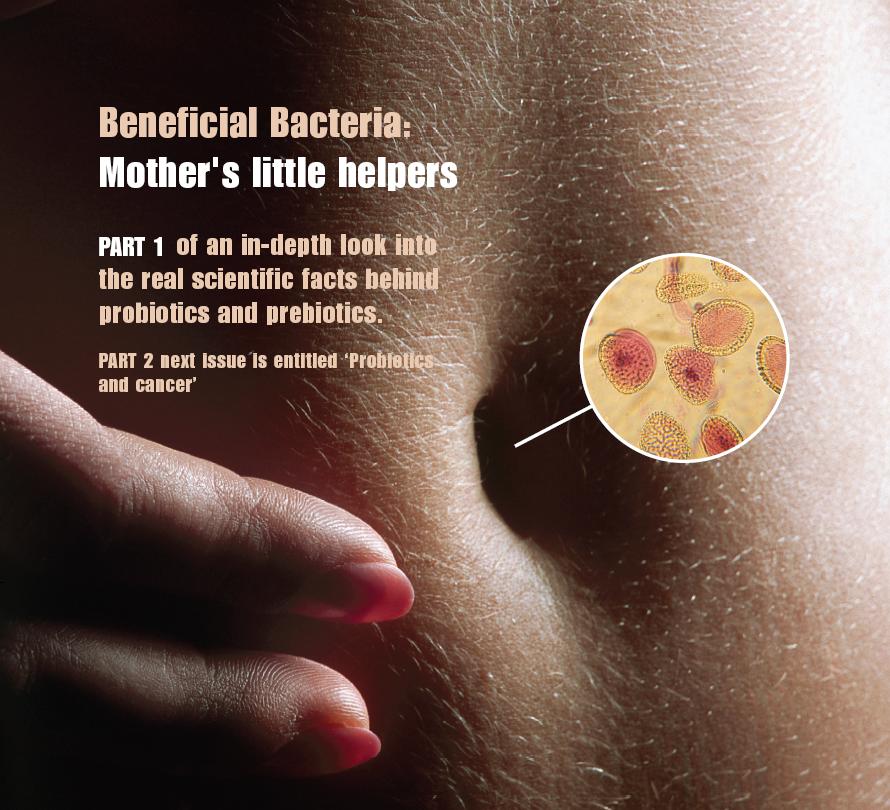
-
Help produce certain cancer fighting vitamins like B-12, folic acid and vitamin K, and melatonin, serotonin, and glutathione
-
Help produce short chain fatty acids which reduce harmful fat production (like cholesteroil)
-
Can actually chelate to (bind to) heavy metals and help excrete them.
-
And in any cancer, the total volume of commensal (good) bacteria has declined, certain commensal strains have been lost, and strains and volumes of pathogens increase.
-
So a gut imbalance and a yeast overgrowth could be part of the toxic load that caused your cancer, but
-
After the drugs, and even a Stem Cell Transplant - are you going to rebuild your gut, killing the pathogens and yeasts and attempting to repopulate the gut with healthy bacteria?
.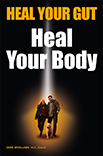 Go to: Best-seller: ’Heal Your Gut Heal Your Body’
Go to: Best-seller: ’Heal Your Gut Heal Your Body’
You really must read Can Candida cause cancer? on this Website and you really should consider following the diet in the article if you have leukaemia.
Consider this quote: "Cancer patients undergoing chemotherapy did not ultimately succumb to cancer, but to an infestation of Candida albicans". That comes from the 1993 Spring edition of the prestigious US medical journal Contemporary Oncology. Candida albicans is a common yeast. My daughter (who had a glioma) in fact had a chronic yeast infection.
Topping up with probiotics (strains of beneficial bacteria shown in clinical trials to deliver a benefit) and following a prebiotic based diet lots of whole foods and whole grains with no sugar, dairy or alcohol and certain yeast killers will help defeat the Candida albicans. It’s all in the article.
Go to: Article: Heal your Gut - Heal your Body
2. Natural herbs and supplements can help fight leukemia
It has long been known that certain natural compounds can act as blood purifiers, whilst others can boost the composition of the blood. For example, members of the onion family, onion and garlic, typically are good blood purifiers.
Then there are herbs that help fight leukemia. Dr Alan Hopking is one of the UK's leading experts on herbs and has prepared several articles for us on the professional use of herbs in fighting cancer.
Three herbs have caused particular interest:
* Feverfew - a herb, with parthenolide as its active ingredients, attacks the roots of leukemia and showed it could even beat the drugs! The research has been accepted by the National Cancer Institute as accurate. See HERE
* Honokiol - There are several studies with several forms of leukemia, showing this extract from the magnolia plant can arrest and cause apoptosis in leukemia cells. For example, see HERE
* Dandelion - there are a number of claims with extracts from this daisy and different leukemia types. See HERE. And there are a number of case histories on the Web. For example, see here.
Then there are compounds that can help take toxins from the body - for example:
* Selenium is a good antioxidant mineral and can displace heavy metals (especially mercury) from cells.
* Chlorella has a similar effect, is a natural food, full of bioactive vitamins and binds to and eliminates toxins from the body. It also stimulates beneficial bacteria.
And other general supplements are very useful. For example:
* Curcumin, has shown in research to be an excellent natural compound in blood and lymph cancers
* Vitamin D has been the subject of extensive anti-cancer research. If you cannot get regular doses of sunshine, you must supplement - 5,000 IUs a day. Double if on chemo as chemo destroys plasma levels.
* Vitamin K has been shown to protect the liver from cancer and help in the detoxification you really should be contemplating. Don’t take it if you have an heart or blood clotting issues.
There are also several research studies from the Mayo Clinic on Green Tea fighting leukemia, and more general studies on Grape seed extract fighting leukemia. A number of studies on leukemia are also presented HERE.
There is even research that turmeric and green tea extract can fight B-chronic lymphocytic leukemia (CLL).
3. Sugar control, a good diet and exercise increase survival times
The first issue is to stop feeding your cancer. Leukemia cells love sugar. Researchers at Colorado Cancer Center have shown that they need it so much that they even steal sugar from healthy cells. They even reduce insulin levels so that blood sugar remains high!
Go to: Leukemia cell steal sugar from healthy cells
The American Cancer Society conducted a 7-year research study which showed that those patients who stuck closest to a good diet and exercise plan, had 31% less recurrence and 42% less death.

Dr. Young S. Kim of the National Cancer Institute told the world about her research into which natural bioactive compounds could prevent a cancer returning. All this and more is in our book - "The Rainbow Diet"
Go to: The Rainbow Diet
Like the American Cancer Society, we too have guidelines on diet and exercise.
Go to: the CANCERactive guidelines on diet and exercise
THE ACS also said that there was clear evidence from their meta-analysis, that complementary therapies could prevent recurrence and increase survival. If you want to know about complementary therapies, we have an extensive list of complementary therapies from acupuncture to Indian Head massage all in a kiddies guide format for you to read and use.
However, here we are more concerned with Diet Therapies and their role in treating and beating cancers of the blood. One of our patrons, the late Oxford don Michael Gearin-Tosh treated his blood cancer (Multiple Myeloma) with the Gerson Therapy . Given just 18 months to live even if he took the orthodox drugs, instead he went on this organic fruit and vegetable diet which seeks to return the body back to its natural healthy balance. He lived 10 years before a non-related illness took his life. You can read all about the Gerson Therapy and Michael’s own "Living Proof a Medical Mutiny" by clicking this link.
Integrative Leukemia treatment
CANCERactive is Europe’s Number 1 Integrative Cancer Charity. This Website alone has more than 4,000 pages of information on it, either as articles or as news stories. More than 10,000 people visit our websites every day. We know from the feed-back we receive just how much we are valued by people trying to beat cancer.
We believe you can increase your personal odds of cancer survival by taking simple health-enhancing steps and adding both complementary cancer therapies and alternative cancer therapies into your mix of treatments.
For example, Hyperbaric Oxygen, curcumin, calorie restriction, melatonin, probiotics and whole body hyperthermia have all been shown in research to make chemotherapy work better. It then kills more cells! The research is covered on this website. Surely it makes a lot of sense to use them in your personal cancer treatment programme?
Go to: How to improve your chemotherapy
We cover how to improve your radiotherapy (and reduce side-effects) too.
We have a complete review of Immunotherapy telling you the accurate figures and what to watch out for. We tell you what is working and when two new drugs have been used, rather than one. It’s a new, emerging and alternative cancer therapy, but not fully there yet!
Go to: A complete review of Immunotherapy
Then we have an article on how to improve the success of your radiotherapy (and reduce the potential side-effects) – all by adding complementary therapies. Our Guidelines on Diet and Exercise can be found through this link:
Go to: CANCERactive Guidelines on Diet and exercise
Our recommended anti-cancer diet is the colourful Mediterranean Diet (with its focus on the French paradox):
Go to: The Rainbow Diet
Like Hippocrates, we believe all cancer begins in the gut and that gut problems, yeast, viral and parasite infections are common constituents of cancer.
Go to: All cancer begins in the gut
But if you just want to look at the most comprehensive list of Complementary Therapies you can find it here:
Go to: CANCERactive Complementary and Integrative cancer therapies
And if you want alternative cancer therapies start here:
Go to: CANCERactive Alternative cancer therapies
Finally, if you want all this put together for you in one simple plan, why not look into having a Personal Prescription?
Go to: Personal Prescriptions with Chris Woollams
We don’t take one penny from any Pharmaceutical company, cancer clinic or supplements company. We have no vested interest. We just want to see you beat cancer.
"If you are already thinking of supplementing with any of the above products, why not take a look at Our Natural Selection by clicking here."

CANCERactive - the appliance of Science
IMPORTANT INFORMATION
|
*Cancer (and its related illnesses) are very serious and very individual diseases. Readers must always consult directly with experts and specialists in the appropriate medical field before taking, or refraining from taking, any specific action.
This web site is intended to provide research-based information on cancer and its possible causes and therapies, so that you can make more informed decisions in consultation with those experts. Although our information comes from expert sources, and is most usually provided by Professors, scientists and Doctors, our easy-to-understand, jargon-free approach necessitates that journalists, not doctors, write the copy. For this reason, whilst the authors, management and staff of CANCERactive, icon, and Health Issues have made every effort to ensure its accuracy, we assume no responsibility for any error, any omission or any consequences of an error or omission. Readers must consult directly with their personal specialists and advisors, and we cannot be held responsible for any action, or inaction, taken by readers as a result of information contained on this web site, or in any of our publications. Any action taken or refrained from by a reader is taken entirely at the readers own instigation and, thus, own risk.
|